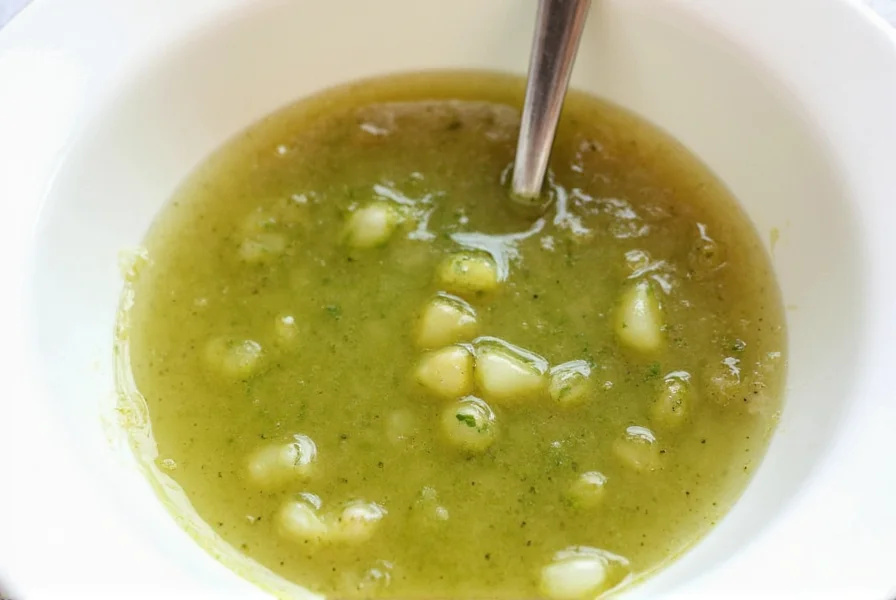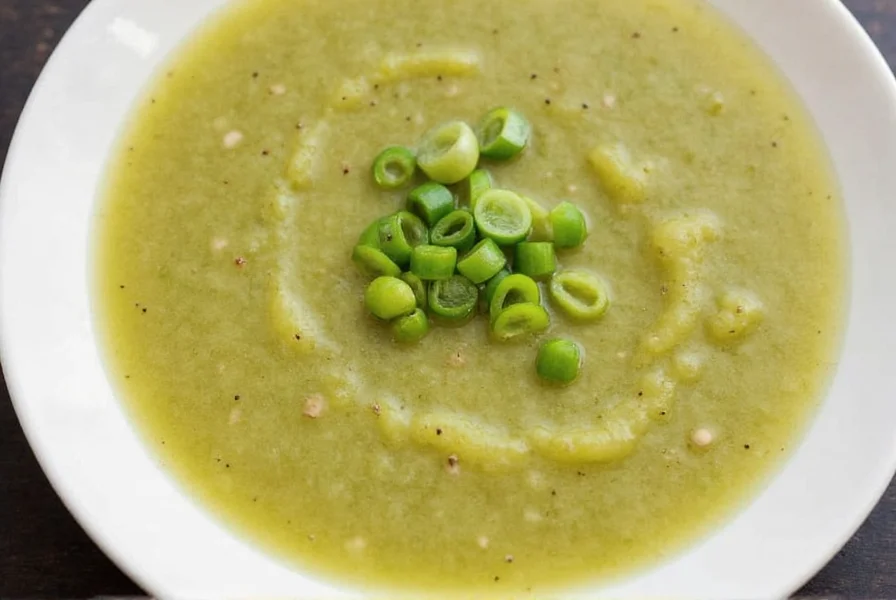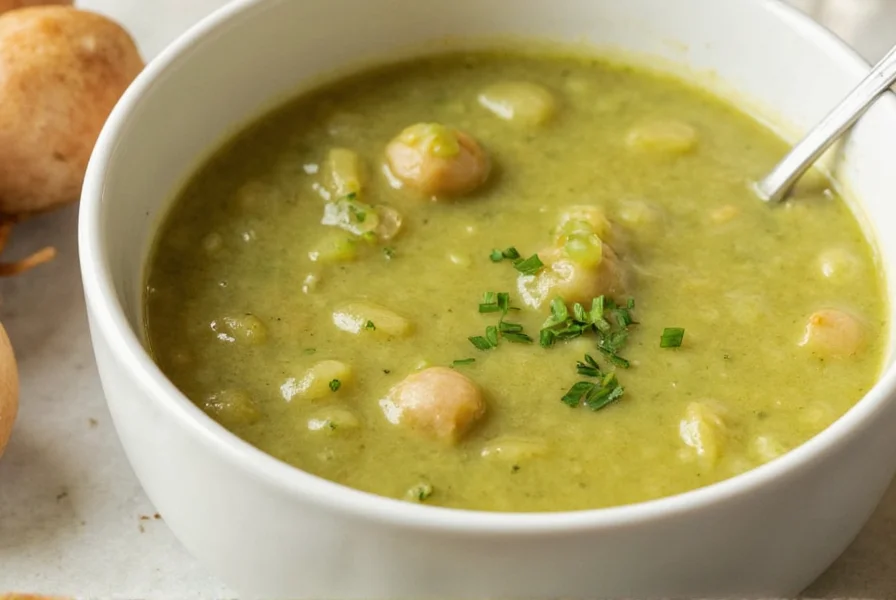Ginger green onion sauce represents one of the most fundamental flavor combinations in Chinese cuisine, particularly prominent in Shanghai and Jiangnan regional cooking. This minimalist sauce relies on fresh ingredients rather than complex preparation, making it accessible for home cooks while delivering restaurant-quality results. The magic happens when the ginger's sharp heat mingles with the green onions' subtle sweetness, creating a dynamic flavor profile that elevates simple dishes.
The Essential Components of Authentic Ginger Green Onion Sauce
Creating a balanced ginger green onion dipping sauce requires attention to ingredient ratios and quality. The traditional formula maintains a precise relationship between components:
| Ingredient | Traditional Ratio | Function |
|---|---|---|
| Green onions (scallions) | 2 parts | Provides mild onion flavor and freshness |
| Fresh ginger | 1 part | Delivers signature heat and aromatic complexity |
| Soy sauce | 1 part | Contributes saltiness and umami depth |
| Sesame oil | 1/2 part | Adds nutty aroma and richness |
| Rice vinegar | 1/4 part | Provides balancing acidity |
Professional chefs emphasize using young ginger with smooth skin for the sauce, as it contains less fiber and delivers a cleaner heat. The green portion of scallions should constitute approximately 70% of the onion component to achieve the proper flavor balance in your homemade ginger green onion sauce recipe.

Step-by-Step Preparation Guide
Creating the perfect ginger green onion sauce requires precise technique despite its simple ingredient list. Follow these professional steps for optimal results:
- Prepare ingredients: Finely mince 4 green onions (using mostly green parts), grate 2 tablespoons fresh ginger using a microplane
- Combine base ingredients: In a small bowl, mix 3 tablespoons soy sauce, 1 tablespoon rice vinegar, and 1.5 tablespoons sesame oil
- Add aromatics: Gently fold in the minced green onions and grated ginger
- Bloom the flavors: Heat 2 tablespoons neutral oil (like canola) until shimmering, then carefully pour over the mixture to release essential oils
- Rest and meld: Allow the sauce to sit for 15-20 minutes before serving to let flavors harmonize
The critical step many home cooks miss is properly blooming the aromatics with hot oil. This technique, called liao you in Chinese cooking, transforms raw pungency into complex aromatic compounds. For a restaurant-quality ginger green onion sauce for dumplings, ensure your oil reaches 350°F (175°C) before pouring.
Variations and Culinary Applications
While the classic formula remains popular, several regional and dietary variations have emerged:
- Sichuan style: Add 1/2 teaspoon chili oil and a pinch of Sichuan peppercorns for numbing heat
- Lightened version: Substitute half the sesame oil with toasted sesame seeds and reduce soy sauce by 25%
- Seafood enhancement: Incorporate 1 teaspoon finely minced garlic and a squeeze of fresh lime
- Vegan adaptation: Use coconut aminos instead of traditional soy sauce for reduced sodium
This versatile sauce shines across multiple applications beyond its traditional role as a dumpling accompaniment. Chefs recommend using ginger green onion sauce as:
- A finishing drizzle over steamed fish (particularly sea bass or cod)
- A base for stir-fry sauces when combined with a cornstarch slurry
- A flavorful addition to noodle dishes, especially with cold sesame noodles
- A marinade for chicken or tofu when allowed to penetrate for 30-60 minutes

Storage and Shelf Life Considerations
Understanding proper storage techniques significantly extends the freshness of your ginger green onion sauce. When stored correctly:
- Refrigerated in an airtight container: 5-7 days
- With added vinegar (increased acidity): Up to 10 days
- Freezing in ice cube trays: 2-3 months (thaw in refrigerator)
Separation is normal during storage—simply stir gently before use. For optimal flavor retention in your ginger green onion sauce storage tips, keep the sauce in a dark glass container rather than plastic, which can absorb odors. Avoid adding the hot oil component until ready to serve if preparing in advance, as this preserves the delicate aromatic compounds.
Troubleshooting Common Issues
Even simple sauces can present challenges. Here's how to address frequent problems:
- Overpowering ginger heat: Balance with 1/2 teaspoon honey or a splash of rice wine
- Bitter aftertaste: Indicates old or fibrous ginger—always use fresh, young ginger
- Excessive saltiness: Dilute with additional rice vinegar and a touch of water
- Lack of aroma: The oil wasn't hot enough when blooming—aim for shimmering but not smoking
For those seeking ginger green onion sauce substitutes, consider a 1:1 replacement with scallion ginger oil if fresh ingredients aren't available, though the flavor profile will differ slightly. Commercial versions often contain preservatives that alter the delicate balance of fresh ingredients.
Nutritional Profile and Dietary Considerations
A standard serving (2 tablespoons) of traditional ginger green onion sauce contains approximately:
- Calories: 60-75
- Total fat: 5-6g (primarily from sesame oil)
- Sodium: 600-700mg
- Carbohydrates: 3-4g
- Protein: 1g
The sauce offers notable health benefits from its fresh components. Ginger contains gingerol, which has anti-inflammatory properties, while green onions provide vitamin K and antioxidants. When preparing ginger green onion sauce nutritional information matters for health-conscious cooks, consider reducing sodium by using low-sodium soy sauce without compromising flavor integrity.
Frequently Asked Questions
What's the ideal ginger to green onion ratio for authentic sauce?
The traditional ratio is 1 part freshly grated ginger to 2 parts finely minced green onions (using primarily the green sections). This balance ensures the ginger provides aromatic heat without overwhelming the more delicate onion flavor. Young ginger with smooth skin works best as it contains less fiber and delivers a cleaner heat profile.
Can I make ginger green onion sauce without sesame oil?
Yes, you can substitute sesame oil with roasted peanut oil or a combination of neutral oil and toasted sesame seeds. For every tablespoon of sesame oil, use 1 tablespoon neutral oil plus 1 teaspoon toasted sesame seeds. While the flavor won't be identical, it will maintain the nutty aroma essential to authentic Chinese ginger green onion sauce. Avoid olive oil as its strong flavor conflicts with the sauce's delicate profile.
How long does homemade ginger green onion sauce last in the refrigerator?
Properly stored in an airtight container, homemade ginger green onion sauce maintains optimal flavor for 5-7 days in the refrigerator. The shelf life extends to 10 days if you increase the rice vinegar content slightly (which raises acidity). For best results, store in a dark glass container rather than plastic, and add the hot oil component only when ready to serve if preparing in advance.
What dishes pair best with ginger green onion sauce?
This versatile sauce complements steamed fish (particularly sea bass), dumplings, boiled shrimp, and roasted chicken. It also works beautifully as a finishing sauce for stir-fried vegetables or mixed with noodles. Professional chefs particularly recommend it with delicate proteins that benefit from aromatic enhancement without heavy seasoning. For authentic pairings, serve alongside Shanghainese dishes like steamed pork belly or drunken chicken.
Why does my ginger green onion sauce taste bitter?
Bitterness typically indicates the use of old or fibrous ginger. Always select young ginger with tight, smooth skin and minimal wrinkles. The bitter compounds concentrate in the fibrous parts, so using a microplane grater (which avoids the fibrous core) produces superior results. Additionally, ensure you're not overheating the oil when blooming the aromatics—oil should be shimmering but not smoking (around 350°F/175°C).











 浙公网安备
33010002000092号
浙公网安备
33010002000092号 浙B2-20120091-4
浙B2-20120091-4